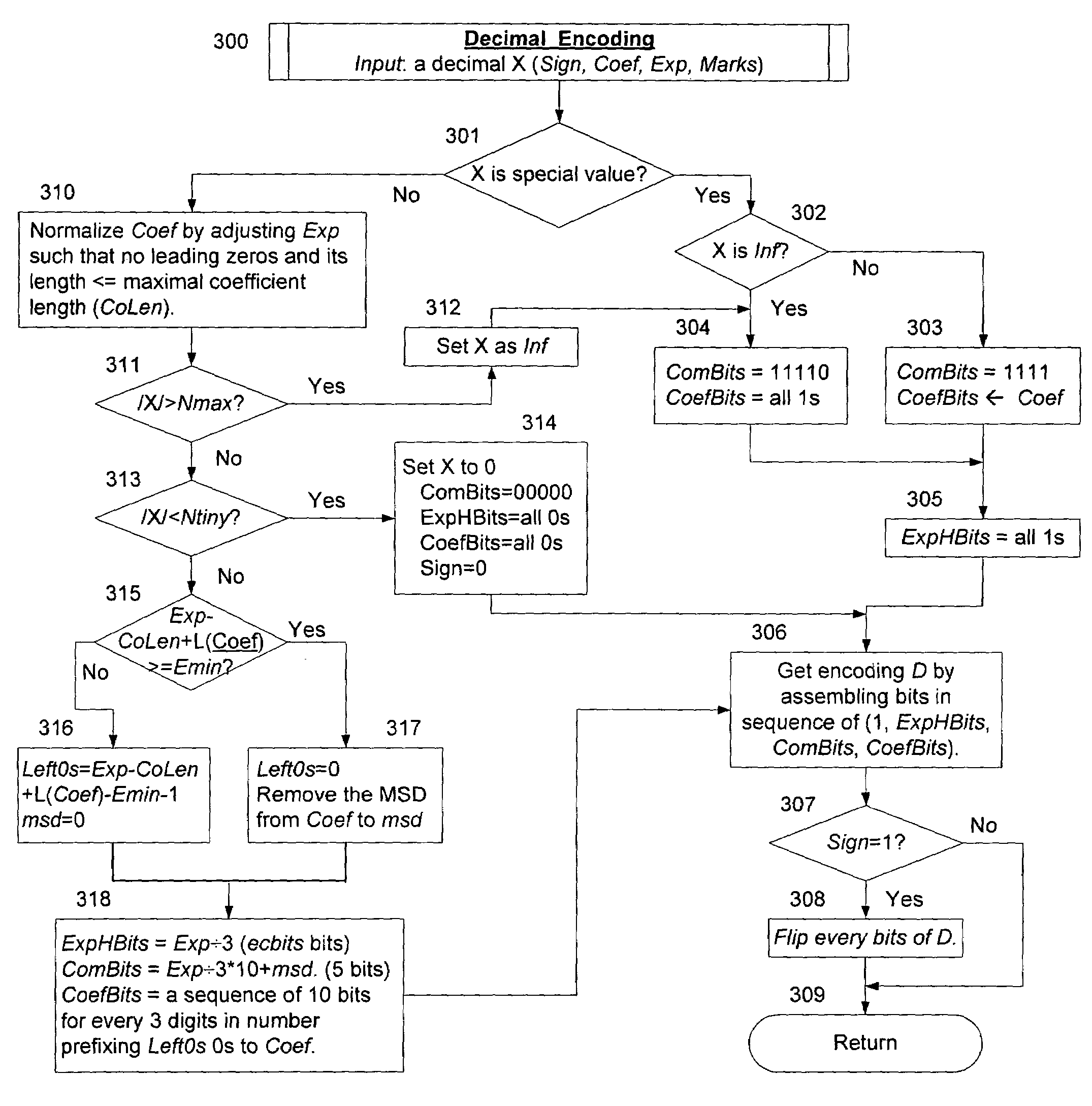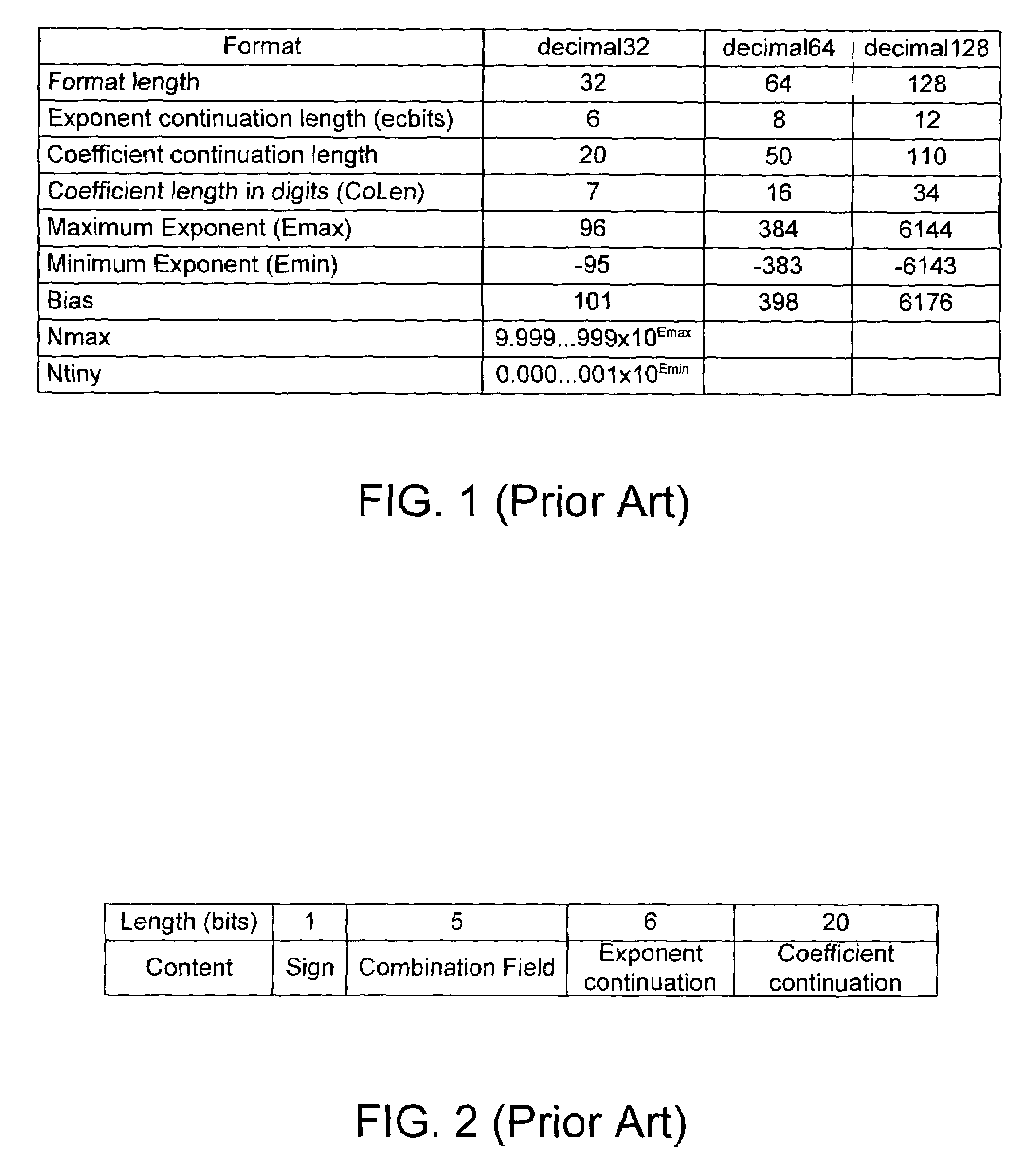Order-preserving encoding formats of floating-point decimal numbers for efficient value comparison
a floating-point decimal number and value comparison technology, applied in the field of order-preserving encoding formats of floating-point decimal numbers, can solve the problems of inefficient value comparison purposes, financial, commercial, user-centric applications or web services, and insufficient use of binary floating-point arithmetic for financial, commercial, etc., and achieve fast and direct string comparison
- Summary
- Abstract
- Description
- Claims
- Application Information
AI Technical Summary
Benefits of technology
Problems solved by technology
Method used
Image
Examples
first embodiment
[0032]FIG. 3 is a flowchart illustrating the order-preserving encoding scheme in accordance with the present invention, to encode an arbitrary decimal number into an order-preserving format. The input decimal X contains information about sign, coefficient (Coef), exponent (Exp), and marks for special values, via step 300.
[0033]The marks of X are checked to see if X is a special value, in step 301. If it is a special value, then X is scheduled to see if it is an Infinitive (Inf), via step 302. If it is Inf, then the combination field is set to ‘30’ in step 303, and its coefficient field is set to all 1s. Otherwise, the combination field is set to ‘31’ (for NaN), via step 304, and the coefficient field reflects the bits of Coef (default value is all is) in step 304.
[0034]In step 310, X is normalized so that its coefficient doesn't exceed the maximal coefficient length CoLen. In step 311, X is tested to see if it is larger than the largest decimal, Nmax. If yes, then it is too large fo...
second embodiment
[0050]In a second embodiment, a decimal format is separated into its constituent parts and normalized. It is then reconstructed in the order sign, exponent, and coefficient. The amount by which the coefficient was shifted (the shift count) is added at the end in extra bits, giving the appropriate ordering for distinct representations and allowing the original decimal floating point (DFP) number to be reconstructed. Negative values are bit-wise inverted. This format uses one more byte than the DFP format.
[0051]FIG. 6 illustrates the length and content of the fields for a decimal32 conversion in accordance with the second embodiment of the encoding scheme of the present invention. The plus bit is an inverse of the IEEE 754r sign bit (‘1’ for positive numbers and non-negative zeros; ‘0’ for negative numbers and negative zeros). The following description describes the encoding for when the plus bit=1. If the plus bit=0, then all remaining bits in the formats are inverted. The non-zero b...
PUM
 Login to View More
Login to View More Abstract
Description
Claims
Application Information
 Login to View More
Login to View More - R&D
- Intellectual Property
- Life Sciences
- Materials
- Tech Scout
- Unparalleled Data Quality
- Higher Quality Content
- 60% Fewer Hallucinations
Browse by: Latest US Patents, China's latest patents, Technical Efficacy Thesaurus, Application Domain, Technology Topic, Popular Technical Reports.
© 2025 PatSnap. All rights reserved.Legal|Privacy policy|Modern Slavery Act Transparency Statement|Sitemap|About US| Contact US: help@patsnap.com



